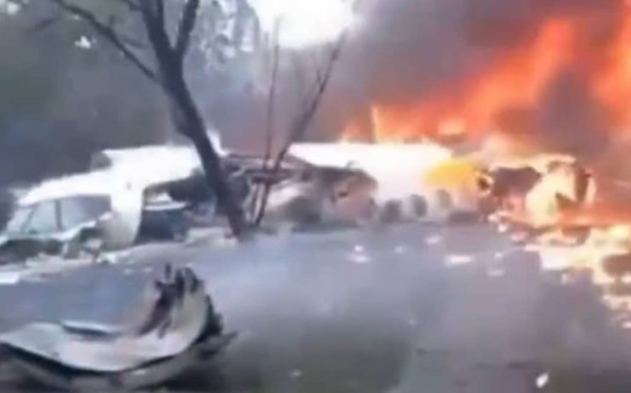By Kayode Sanni-Arewa
Brazilian authorities successfully completed the recovery of all 62 bodies from the plane that tragically crashed on Friday
Investigators has began examining the aircraft’s black boxes to uncover the cause of the disaster.
Videos captured the ATR 72-500 aircraft in a terrifying downward spiral before it crashed into a residential area in Vinhedo, located about 80 kilometers (50 miles) northwest of São Paulo, Brazil’s financial hub.
Operated by the airline Voepass, the plane descended almost vertically, landing on its belly and bursting into flames with such force that it was nearly “flattened,” according to São Paulo fire lieutenant, Olivia Perroni Cazo.
“All 62 bodies (34 male and 28 female) have been recovered and transported to the morgue in São Paulo for identification and return to their families,” the regional government reported on Saturday evening.
Two victims have already been identified through fingerprint analysis, including the pilot and co-pilot, said Vinhedo Mayor Dario Pacheco.
The twin-engine turboprop, manufactured by aviation firm ATR, was on a flight from Cascavel in southern Paraná state to São Paulo’s Guarulhos International Airport.
Experts from Brazil’s Aeronautical Accidents Investigation and Prevention Center (CENIPA) have begun analyzing the black boxes recovered from the wreckage, which contain cabin conversations and in-flight data, said CENIPA chief Marcelo Moreno.
A preliminary report is expected within 30 days, according to the Brazilian Air Force.
Flight Radar 24 data indicated that the plane had been flying for about an hour at an altitude of 17,000 feet (5,180 meters) before it began losing altitude rapidly at 1:21 p.m. local time (1621 GMT). Radar contact was lost just a minute later at 1:22 p.m.
The air force noted that the crew did not declare an emergency, and weather conditions were not reported as a factor.
ATR, the aircraft’s manufacturer, which is a joint venture between Airbus and Italy’s Leonardo, stated that their experts would assist with the investigation.
The plane, which had been in service since 2010, met all current standards, and the four crew members were fully certified, according to Brazil’s National Civil Aviation Agency.
Voepass’s operations director, Marcel Moura, confirmed that the aircraft underwent routine maintenance the night before the accident and no technical issues were found.
However, some experts speculated that icing on the wings might have contributed to the crash. Moura noted that while the plane operated at an altitude where it could be more sensitive to icing, the conditions on Friday were “within acceptable parameters for a flight.”
The crash left the plane’s fuselage a charred, twisted heap of metal. Despite the devastation, there were no casualties on the ground.
Brazilian President Luiz Inácio Lula da Silva declared three days of national mourning in response to the tragedy, one of the worst aviation accidents in the country’s history.
“It was horrible, horrible… such a sad tragedy,” said Lourdes da Silva Astolfo, 67, who lives just meters from the crash site.
According to AFP, she described feeling a “rumbling, almost like a tremor,” before seeing the plane nearly overhead.
Seconds later, it crashed, followed by stunned screams from neighbors as thick smoke billowed into the air.
The normally quiet, wooded neighborhood where the crash occurred saw a heavy presence of police, ambulances, and fire trucks on Saturday.
Voepass confirmed that all victims were traveling on Brazilian identity documents, including a dual citizen from Portugal and a family of three Venezuelans.
This incident marks Brazil’s most devastating air disaster in 17 years.

